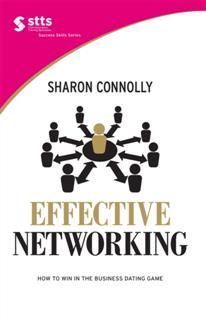Effective Networking
214 trykte sider
Citater
- Eka Kurchishvilihar citeretfor 7 år sidenLinkedIn was founded in 2002 and launched in 2003. It now has over 175 million users in 200 countries. Its sole purpose was originally professional networking and its concept is based on the theory of six degrees of separation. You can connect to anyone in the world through a link of seven people that know each other. Here are some of the main features of LinkedIn:
• LinkedIn allows users to create a list of connections with whom they have some level of relationship. For me, the main power and purpose of the site is that I truly only connect with people that I know and have networked or worked with. I do get lots of requests for connections from people that I don’t know, but I normally reject their request as I want my list of connections to be authentic. If someone asks me for an introduction to one of my connections, I want to be able to truthfully recommend them, which I can’t do if I don’t know them.
• Once you are connected with new people you can look through their list of connections and ask for an introduction. When you add a connection, you are alerted of mutual connections so you can consider who do they know that you know. It’s a brilliant way to extend your network through mutual introductions.
• LinkedIn is like your online CV. You load details of your previous work experience and previous employees, and design your profile to showcase your work and community experience.
• Based on your skills, LinkedIn can recommend jobs that you might be suitable for.
• Employers post jobs and can search profiles for potential candidates. Recruitment consultants use LinkedIn extensively to headhunt and check out potential hires.
• Job seekers can review the profiles of hiring managers and discover which of their existing contacts can introduce them.
• Users can post their own photos and view photos of others to aid in identification.
• Users can now follow different companies and get notifications about the new job offers available.
• LinkedIn Answers is a forum area of the site where users post questions and other users can comment and provide insights and answers. This can be a great opportunity for you to position yourself as an expert or influential thought leader on a subject.
• Users can form LinkedIn groups similar to Facebook groups where they can interact with each other.
• LinkedIn recently allowed advertising. You can place an advertisement that specifically targets a LinkedIn demographic. LinkedIn has membership levels, and free users are not able to see as much information as those who pay. Names and contact details are limited for those who wish to use the site for free.
So that is a little bit of background - Eka Kurchishvilihar citeretfor 7 år sidenStar Tips when planning your networking
fb2epub
Træk og slip dine filer
(ikke mere end 5 ad gangen)


